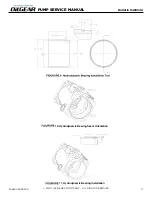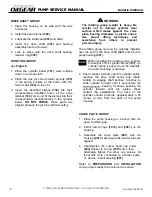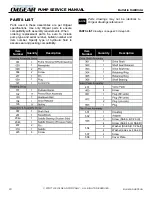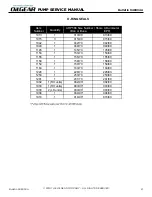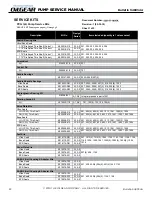
© 2019 THE OILGEAR COMPANY - ALL RIGHTS RESERVED
Bulletin 948034A
8
Bulletin 948034A
PUMP SERVICE MANUAL
PRINCIPLE OF OPERATION
The illustrations show the pump driven counter-
clockwise (left hand) from the top (plan) view.
Figure 2. Cut-away of a
Typical “PVG” Pump
Position B, Pump During Full Delivery From
PORT B - Figure 3
Rotating the drive shaft
(301)
counter-clockwise
turns the splined cylinder, which contains the
pumping pistons
(102)
. When the cylinder rotates,
the pistons move in and out within their bores as
the shoes ride against the angled
(C)
swashblock
(201)
.
As the cylinder rotates, the individual piston bores
are connected, alternately, to the crescent shaped
port
A an
d port
B
in the valve plate. While
connected to the suction port
A
, each piston moves
outward
(OUT)
, drawing fluid from port
A
into the
piston bore until its outermost stroke
(D)
is
reached. At this point, the piston bore passes from
port
A
to port
B
.
While rotating across the crescent port
B
, each
piston moves across the angled swashblock face
and then each piston is forced inward
(IN)
. Each
piston then displaces fluid through the crescent to
port B until its innermost stroke
(D)
is reached. At
this point, the piston bore passes from the B to the
A
crescent again and the cycle is repeated.
Figure 3. Position B, Pump During Full Delivery From Port B
A
A
C
IN
OUT
A
B
301
306
001
201
103
104
102
101
401
D
SECTION A-A

















